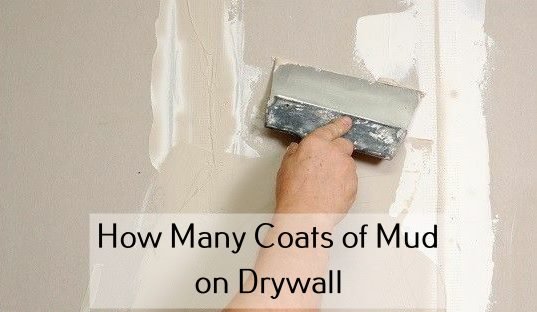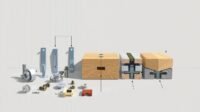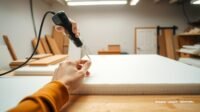When you have just finished renovating your home, you might have wondered about a lot of things. How many coats of mud on drywall? What is included in mudding the drywall?
Mudding is a method of applying several thin drywall compound coats on the screws or joints in the new drywall. The procedure is quite complicated, but the wall will look so flat that no one can even see the seams when it’s done correctly.

How Many Coats of Mud on Drywall Do We Need?
The time you have, the type of mud you have prepared, as well as the finish you desire for your walls determine how many coats of mud on drywall you will need. Now, it’s time for you to familiarize yourself with the procedure of applying coats of mud to the drywall.
Read also:
- Place a canvas drop cloth over the floor and make sure you dress in old clothing since mudding is a very messy process.
- If you use powdered mud, use a heavy-duty drill to mix it until smooth, as suggested by its manufacturer.
- If you wonder how to apply drywall mud smoothly, make sure you apply the initial coat to the joints and screw indentations using a 6-inch taping knife and wipe away the excess mud.
- Run a piece of paper tape on the top of the joint when the mud is still damp. With a 6-inch taping knife, smooth out the paper onto the mud until there are no bubbles. Wipe the excess using the same knife.
- Apply a thin layer of mud on each side of the inside corner with a 6-inch knife and smooth it into the centre. Cut and fold the paper tape over the damp mud. Smooth out the paper tape using the taping knife. By using light stroking motions, press the tape without removing it from the corner. Wipe the excess mud away. If you ask how many mud coats on inside corners you need, then it’s highly suggested to apply the second coat to every screw and seam in the corner areas.
- If you use premade tape corners, apply them as suggested by the manufacturer. Smooth the mud with long vertical motions on both sides so that you get a uniform corner.
- How many coats of mud on drywall you will need mainly depend on the type of mud. However, after you finish the first coat and let all the mud dry, it’s highly recommended for you apply the second coat. Apply the next coat over the joints, screw indentations, and each corner in the same way as the first coat. In the second coat, you can also coat the butt joints. Let them all dry and apply the third and last coat with a skinny mud layer.
Once all the mud is dry, sand the indentations and joints until it’s all perfectly smooth. Now you know how many coats of mud on drywall you need, and your wall is ready to wallpaper or paint to fit your preference.


